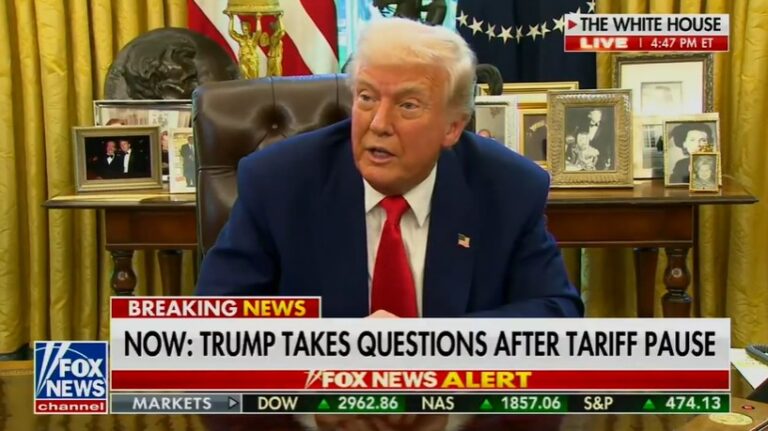Long past its painful peak, inflation in the United States may be heading steadily back toward its pre-pandemic levels, without the need for further interest rate hikes by the Federal Reserve.
Such a scenario became more likely, if hardly guaranteed, after Tuesday’s surprisingly tame report on consumer prices for October. The Labor Department’s data showed a broad-based easing of inflation across most goods and services. The price of gas? Down. Appliances? Down. Autos? Down. Same for airfares, hotel rooms and doctors’ fees.
Overall inflation didn’t rise from September to October, the first time that consumer prices collectively haven’t budged from one month to another in more than a year. Compared with a year earlier, prices rose 3.2% in October, the smallest such rise since June, though still above the Fed’s 2% inflation target.
Excluding volatile food and energy prices, so-called core inflation was just 0.2% last month, slightly below the pace of the previous two months. Economists closely track core prices, which are thought to provide a good sign of inflation’s likely future path. Measured year over year, core prices rose 4% in October, down from 4.1% in September, the smallest rise in two years.
“The inflation fever has broken,” said Bill Adams, chief economist at Comerica Bank. “Rising petroleum production is holding down gas prices, house prices are rising more slowly after mortgage rates surged in 2023 and rents are also rising more gradually” as more apartment buildings are completed.
October’s milder-than-expected price figures make it much less likely that the Fed will impose another rate hike. Many economists now say that the Fed’s most likely next move will be to cut rates, likely sometime next year, though that would depend on whether inflation continues to cool.
WHAT’S DRIVING INFLATON LOWER, AND WILL IT CONTINUE?
A major factor has been a big improvement in the supply of many things — workers, housing and components for manufactured goods.
Millions of Americans have come off the sidelines in the past year and flooded back into the workforce, seeking and (mostly) finding jobs. Immigration has increased, too, and with it more people looking for work. With more hires available, businesses haven’t had to raise wages as much to fill jobs, thereby easing the pressure on those businesses to raise their prices.
At the same time, the largest number of new apartment buildings nationwide in decades are being completed, a trend that is helping slow rent increases. Rental costs, after a spike in September, rose at a much more gradual pace last month.
Rents and other housing costs are likely to keep coming down, economists say, as the cost of new leases continues to fall, according to real-time data providers such as Zillow. Those lower prices show up in the government’s data with a lag.
And the supply chains that were badly snarled during the pandemic have pretty much unwound. An ample availability of products, parts and components help keep a lid on their prices. Automakers, for example, are having a much easier time finding semiconductors.
Partly as a result, new car prices declined last month, defying fears that the now-settled autoworkers’ strike would reduce dealers’ inventories and send prices higher. Used car prices, too, are down. They fell for a fifth straight month in October and have tumbled 7% from a year ago.
“We’re finally undoing that and getting the benefits,” Austan Goolsbee, president of the Federal Reserve Bank of Chicago, said Tuesday in remarks at the Detroit Economic Club.
Separately, consumers are widely expected to pull back on spending after a blowout summer, with credit card debts — and delinquencies — rising and average savings falling. Cooler demand should force businesses to compete more on price.
Gas costs have kept falling this month, with the national average price at the pump averaging $3.35 Tuesday, down 42 cents from a year earlier. Those prices declines could push overall inflation, measured year-over-year, below 3% by December.
BUT AREN’T THINGS STILL PRETTY EXPENSIVE?
Yes, inflation is still painfully apparent in many areas. They include auto and health insurance and some groceries, like beef and bread.
The average cost of auto insurance, which jumped 1.9% just from September to October, has soared nearly 20% from a year earlier. As new and used vehicles have grown more expensive, so has the cost of insuring them. And health insurance prices rose 1.1% last month, though that was largely due to a change in the government’s methodology.
But even as overall price increases slow, it doesn’t mean inflation is reversing or that most prices are falling back to pre-pandemic levels. The consumer price index, the most widely followed measure of inflation, remains about 20% higher than it was before the pandemic.
Milk prices, which have ticked down compared with the past year, are still 23% higher than they were pre-pandemic. Ground beef prices are 31% higher. Gas prices, despite a steep decline from a year ago, are still 46% higher than before the pandemic.
Many economists say a key reason why so many Americans hold a gloomy view of the economy despite very low unemployment and steady hiring is that these prices — on items that they buy regularly — remain much higher than they were three years ago.
ARE PAYCHECKS KEEPING UP?
Barring a deep and painful recession, prices aren’t going to fall to their pre-pandemic levels. Instead, economists say, Americans’ wages need to rise to help pay for the higher costs.
Wages and salaries trailed inflation in 2021 and 2022, exacerbating the pain of higher prices. Yet this year, as inflation has cooled, average pay has pulled ahead of inflation. By most measures, average paychecks, adjusted for inflation, are back to where they were before the pandemic.
Yet that essentially means that Americans, on average, have had scant real pay increases compared with three years ago. And while average pay may be back to pre-pandemic levels, many people have received below-average pay raises and are still behind inflation.
HOW MIGHT THE FEDERAL RESERVE RESPOND?
The Fed will likely welcome Tuesday’s report as evidence of further progress toward getting inflation back to its target of 2%. Fed officials, led by Chair Jerome Powell, are considering whether their benchmark rate is high enough to quell inflation or if they need to impose another increase in coming months.
Powell had said last week that Fed officials were “not confident” that rates were sufficiently high to tame inflation. The Fed has raised its benchmark interest rate 11 times in the past year and a half, to about 5.4%, the highest level in 22 years.
But the central bank has raised its key rate just once since May. Since its last meeting on Nov. 1, a government report showed that hiring cooled in October compared with September, and wage growth slowed, thereby easing pressure on companies to raise prices in the coming months.
Adams, the Comerica economist, said he thinks the Fed’s most likely next move will be to cut rates, likely by mid-2024.
The prospect that the Fed may end its rate hike campaign and eventually cut rates ignited a stock market rally Tuesday. The Dow Jones industrial average soared nearly 1.4% in mid-afternoon trading. The yield on the benchmark 10-year Treasury note fell to 4.46%, down from nearly 4.6%, reflecting investors’ expectations that borrowing rates will decline.
The Fed’s rate hikes have increased the costs of mortgages, auto loans, credit cards and many forms of business borrowing, part of a concerted drive to slow growth and cool inflation pressures. The central bank is trying to achieve a “soft landing” — raising borrowing costs just enough to curb inflation without tipping the economy into a deep recession.
“Things are proceeding in a way that is very consistent with what (the Fed) would want to see,” said Eric Winograd, chief economist at AB Global, an asset management firm. “They look like they are on course to generate a soft landing. There’s no guarantee that they will actually manage to accomplish it. But right now, that’s the story that the data are telling.”
(AP)












One Response
THE SHOCKING MESSAGE DIRECTLY FROM HASHEM RELATING TO WHY THE ECONOMY CRASHED AND IS AT THE LEVEL IT CURRENTLY IS TODAY
Why is the economy so bad today? Why is the whole world going down? For the past thousands of years there was always Avoda zara in the world-from the molech to the baal to the asheira tree etc…-todays avoda zara is MONEY, we are a servant to money, we serve money, we bow down to money, we let money talk & rule us. Thus we leave Hashem no choice but to take it away from us Rachmana L’tzlan. But you can still save yourself from going down. if a person can use his money the right way & remember that it all comes from Hashem & it was just loaned to him (even though he worked for it), then he is the perfect person to continue holding Hashem’s money.